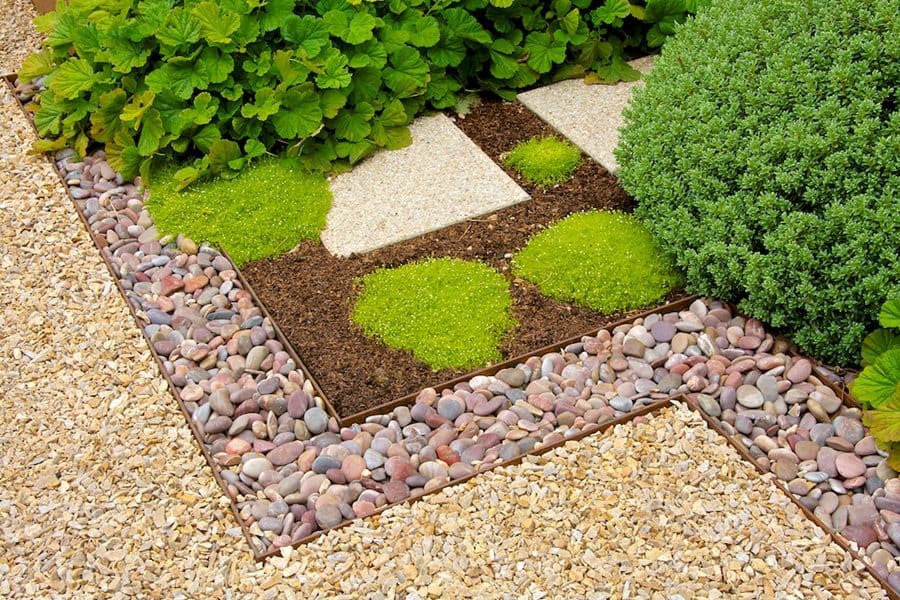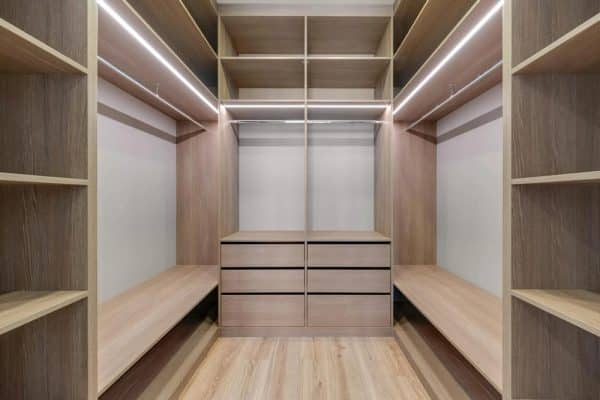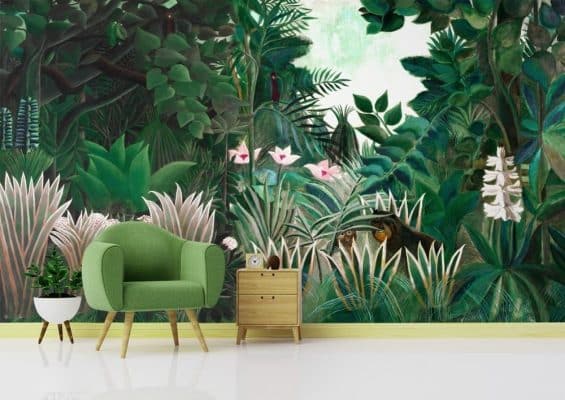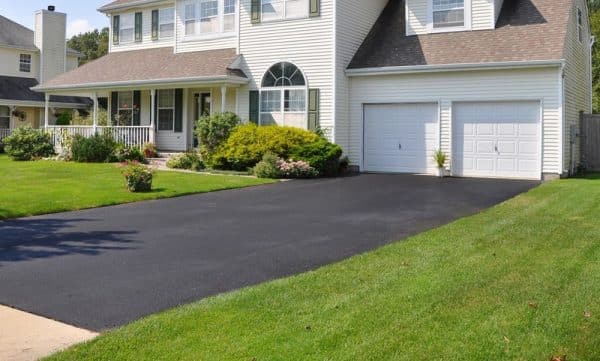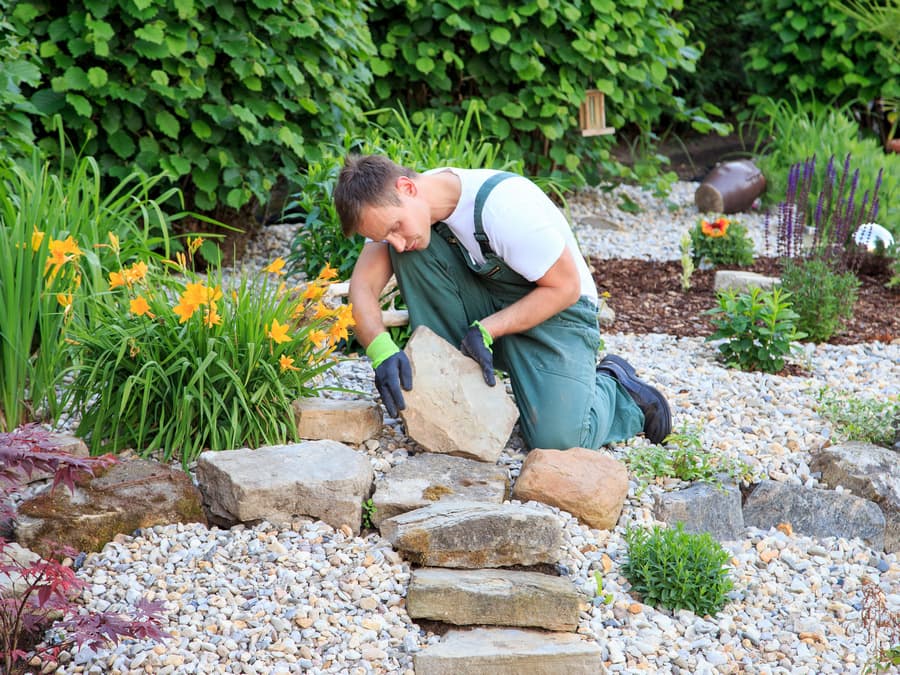
When landscaping, many would be inclined to use plants and mulch to add color and fill in space. While perfectly viable options, plants require maintenance like water, nutrition, appropriate climate, and mulch eventually fades and rots away into dirt again. In addition, one may consider poured concrete for their paths, however concrete has a very cold and utilitarian feeling to it, and requires a fair amount of labor costs. This leaves rocks with a very strong case for inclusion in your next landscaping job.
Why Use Rocks?
Rocks have been a staple of gardens for centuries. In Eastern Asian history, the use of rocks in gardens can be traced back over 1,500 years. Often, the rocks would be the highlight of what are popularly known today as ‘Zen gardens’. In the 1800s Europe was in the grip of a Rockery craze, leading to mass importation of exotic stones to be used as accent pieces in large gardens. They add a rich contrast to the otherwise vibrant plants all around, and contribute to a feeling of naturalism.
In addition to their long and varied past as a landscaping staple, rocks come with a number of practical benefits. Using rocks instead of mulch in a garden bed leads to:
● Minimizing erosion
● Minimal maintenance
● Reduction in weeds
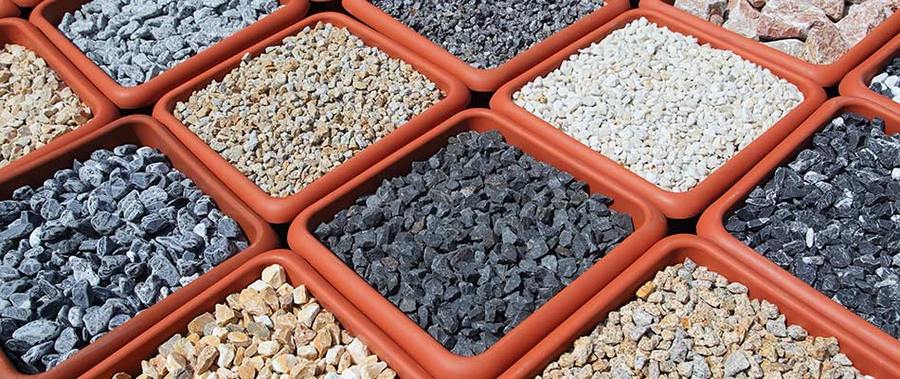
What Types of Rocks Are Used For Landscaping?
Among the most popular rocks for landscaping are:
● River Rocks
● Pea Gravel
● Lava Rocks
● Crushed/Decomposed Granite
● Marble Chips
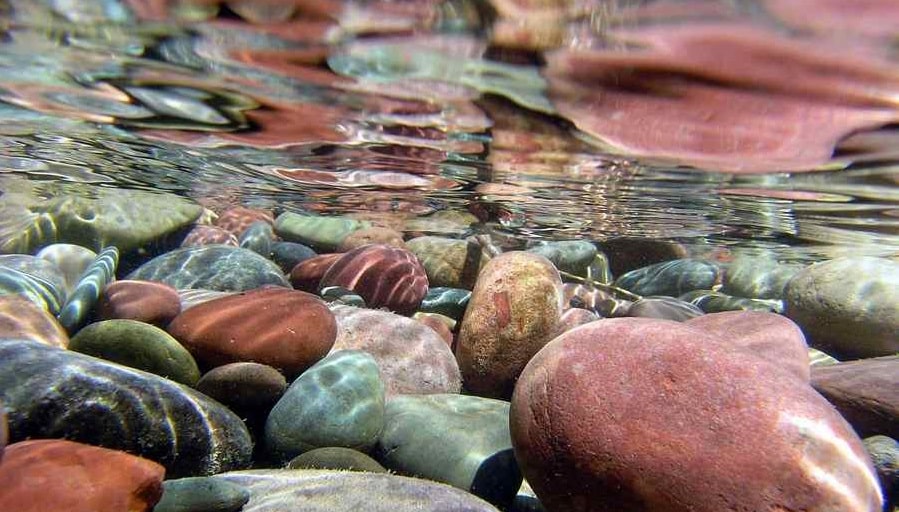
River Rocks
River rocks are variously sized stones, that have been weathered by the flowing water of a river, into a smooth round shape. They come in many shapes and colors depending on where they are sourced, and are quite durable as they are whole unbroken stones. They pair very well with running water features, and are very popular for water drainage.
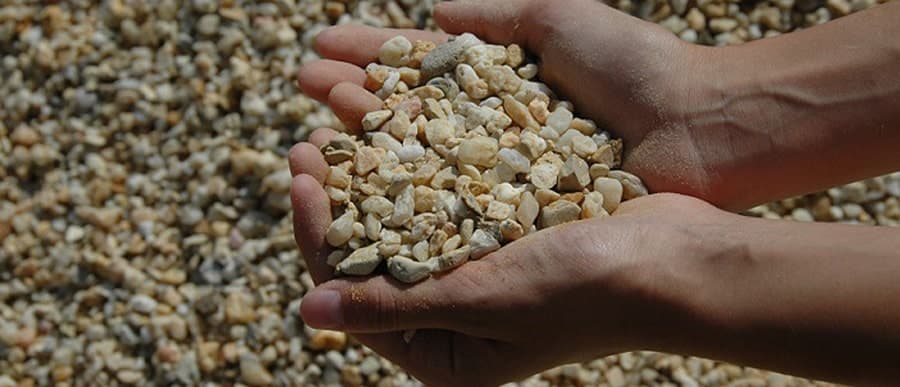
Pea Gravel
Pea gravel, as the name implies, is a pea sized gravel (usually about ¼ inch to an 1/8th inch in size). Similar to river rocks, they have a smooth finish and come in a wide range of earth tones. This gravel is fairly inexpensive and versatile, being used for plant beds, as well as footpaths and drainage. You can also easily find flatbed trucking companies to make delivery wherever you need if you need a large amount of product.
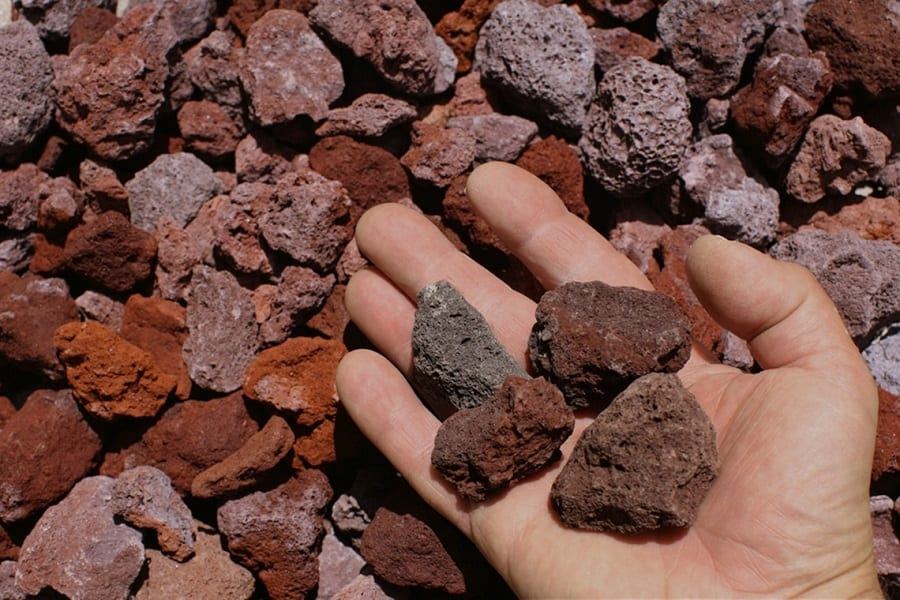
Lava Rocks
Lava rocks are composed of actual hardened lava from volcanoes. They boast a lightweight composition, and vibrant colors making them a bolder choice of accent for a garden. Lava rocks are ideal in dry, more arid climates, as they absorb heat from the sun during the day, and release it into the ground at night, maintaining a healthy temperature for plants.

Crushed/Decomposed Granite
Decomposed granite is a landscaping rock made by decomposing or washing granite until it looks like many very small fine rocks. Usually a reddish tan color and sandy to the touch, decomposed granite provides a rustic look, and is very affordable. Crushed granite, similar to decomposed granite, is made from granite, however these particles are larger. They are quite natural in appearance, and are perfect for filling pathways and pavement, as well as blending well with plants. Though more expensive than decomposed granite, crushed granite is very durable, and can last a very long time.
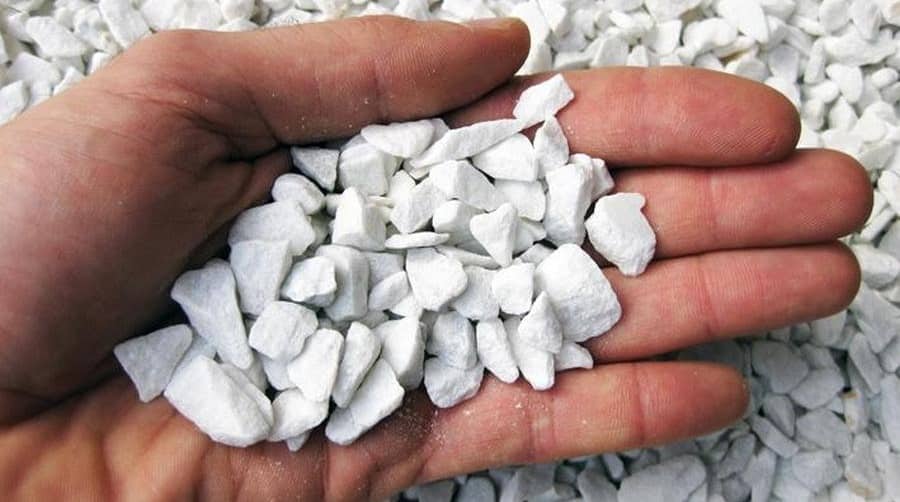
Marble Chips
Marble is an incredibly popular choice of rock for countertops, and for the more opulent projects, flooring or walls. The feelings of beauty this type of rock creates for these spaces can be transplanted to the garden as well. Marble chips, as one could guess, are made from various pieces of marble chipped from a quarry. Its bright white color accents well with plants and more classy and sleek aesthetics. Word of warning however, marble as a rock has a high ph level, meaning it is very acidic. This means that over time, the soil underneath will slowly become more alkaline as the acid from the marble seeps into the soil. Avoid planting certain plants with marble chips as the high ph may kill them, however, some plants benefit from such changes. Hydrangea flowers, for example, change color depending on the acidity of the soil in which they grow. Plants that require high acidity will thrive with marble chips.
While all the above choices are viable, be sure to consider how the color of the rocks pair with the plants and architecture. These rocks serve more as an accent to a more colorful garden or building than as the main draw. Despite their practicality and the competitive sand and gravel pricing, incorporating gravel and stone into your next landscaping job can do wonders for both aesthetics and curb appeal. One’s peace of mind, knowing that their yard will remain beautiful with only minimal maintenance can be priceless to the right person.
